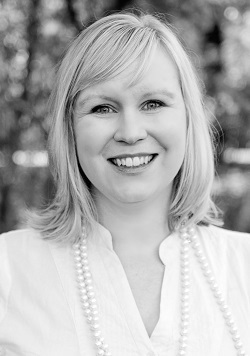7/28/2017
Sarah Pierce, assistant professor of chemistry at Cumberland University, has co-authored an article in the prestigious Journal of Chemical Education (JCE) in volume 94. The article detailed research on whether students’ passing rates on chemistry laboratories were affected by whether their course was instructor-led or computer-led.
The article, “Supplemental Learning in the Laboratory: An Innovative Approach for Evaluating Knowledge and Method Transfer,” focused on the results of a collaborative research project that involved faculty from the Centers for Disease Control and Prevention, Cumberland University, Lander University, West Kentucky Community and Technical College, and Emmanuel College. All of the developmental work for the foundational learning experiment and the supplemental learning experiment was conducted at Cumberland University. Students enrolled in General Chemistry I during the 2012 academic year participated in the study.
Pierce received a summer research development grant from Cumberland University, along with a grant from the Bell family for Pierce’s travel to present the research at the 24th Biennial Conference on Chemical Education at the University of Northern Colorado.
The research determined that there was no statistical difference between the quality control passing rates of the participants receiving instructor-led instruction and those receiving computer-led instruction. These findings demonstrate the successful application of the Multi-Rule Quality Control System (MRQCS) to evaluate knowledge and technology transfer.
In this study, the MRQCS, which is a tool currently employed by the Centers for Disease Control, was used to evaluate and compare laboratory performance.
Pierce’s summary of the research: “We applied the MRQCS to a comparison of instructor-led and computer-led pre-laboratory instruction for a supplemental learning experiment. Students in general chemistry and analytical chemistry from both two- and four-year institutions performed two laboratory experiments as part of their normal laboratory curriculum. The first laboratory experiment was a foundational learning experiment in which all of the students were introduced to the Beer−Lambert law and spectrophotometric light absorbance measurements. The foundational learning experiment was instructor-led only, and participant performance was evaluated against a mean characterized value as determined by the instructors. The second laboratory experiment was a supplemental learning experiment in which students were asked to build on the methodology they learned in the foundational learning experiment and apply it to a different detection material. The instruction type was varied randomly , with participants receiving either instructor-led or computer-led pre-laboratory instruction. The MRQCS was applied, and it was determined that there was no statistical difference between the quality control passing rates of the participants receiving instructor-led instruction and those receiving computer-led instruction.”
The article can be found at http://pubs.acs.org/doi/abs/10.1021/acs.jchemed.6b00964, and will be published in an upcoming print version.
The JCE is the official journal of the Division of Chemical Education of the American Chemical Society, co-published with the American Chemical Society Publications Division. Since 1924, the Journal of Chemical Education is the world’s premier chemical education journal. The journal publishes peer-reviewed articles and related information as a resource to those in the field of chemical education and to those institutions that serve them. JCE typically addresses chemical content, activities, laboratory experiments, instructional methods, and pedagogies. The Journal serves as a means of communication among people across the world who are interested in the teaching and learning of chemistry. This includes instructors of chemistry from middle school through graduate school, professional staff who support these teaching activities, as well as some scientists in commerce, industry, and government.


